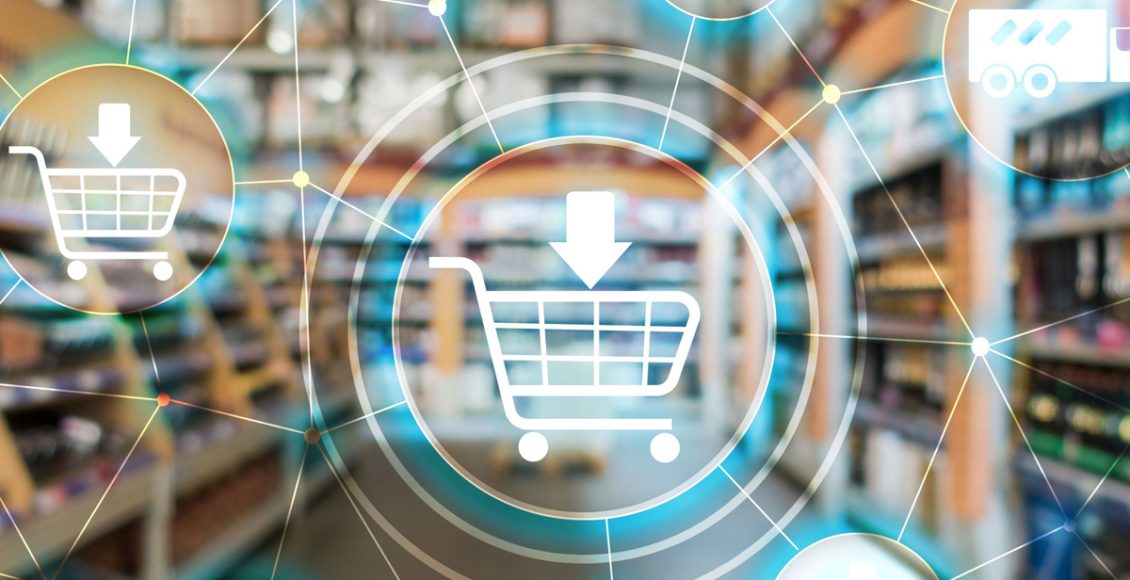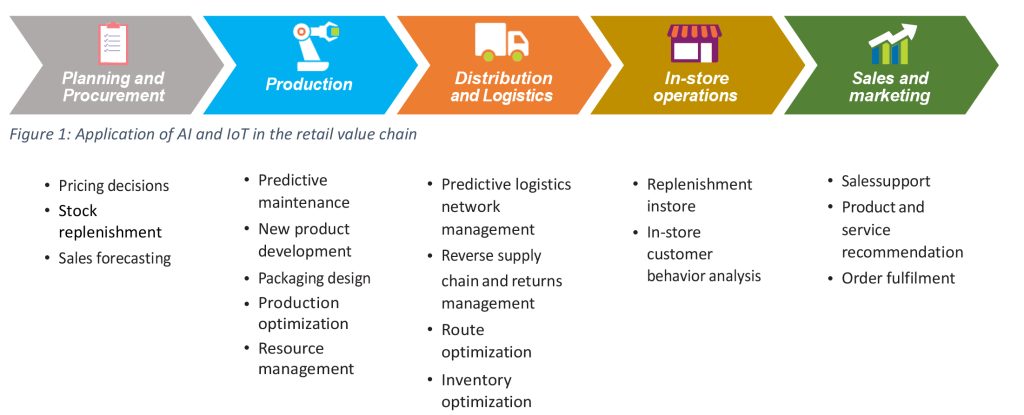
Improving Sustainability in Retail Industry by Use of Modern Technologies
Introduction
The complexity in the management of a retail supply chain, particularly shelves is familiar. Many new technologies allow us to visualize the availability of items on the shelf. The digitization of retail spaces and the advancements in this field present the possibility of effectively utilizing all the data originating from the most dissimilar sources, so bringing about a substantial transformation in the process of making decisions.
One-third of the world’s food goes wasted. To solve food and nutrition security, lessen environmental stress, and prevent food waste, this issue must be aggressively addressed. The components of postharvest management—processing, packing, distribution, and consumption—account for more than 80% of waste. Food waste increase the risk of undernutrition by lowering food security and deteriorating food quality.
Food waste has a big influence on companies that already have extremely narrow profit margins. They lose the money they would have made from selling it in addition to the money they would have spent procuring, processing and storing it. Inaccurate supply and demand forecasting, damage sustained during transportation, unforeseen demand variations, unclear date labelling, inadequate cold chains, large menus, and staff misconduct such as inappropriate handling and storage are the main reasons behind food waste in retail establishments.
Considering the aforementioned, there is an immediate need for efficient food waste prevention technologies. Over the past 20 years, there has been a significant rise in research on methods to extend shelf life. The introduction of artificial intelligence (AI), AI powered tools and IoT have revolutionized the quickly changing retail industry, changing how companies run and engage with their clientele. Its application throughout the retail value chain is illustrated in Figure 1
- Artificial intelligence
The simulation of human intelligence processes by machines, particularly computer systems, is known as artificial intelligence. The most common applications of AI in retail are:
I. Preventing food spoilage by monitoring store environment/ conditions throughout the supply chain
Monitoring and tracking various aspects of store environment and occupants such as store temperature, foot fall, fresh air flow and filtration, humidity, carbon dioxide concentration, zone density, weather, etc., could help in maintaining healthy and comfortable store environment or at any point in the supply chain.
II. Demand forecasting to avoid excess production and ensure sale/ consumption before expiry
Leveraging contextual data to build models that improve forecast accuracy and avoid any guesswork in identifying and tracking inventory of products, especially the ones with lower shelf life, based on the inputs received on foot fall trend at store, local events, weather conditions, store environment, etc. and providing recommendations for optimal stocking of inventory and flagging off in case of pile up and well before they reach their expiry date.
Dynamic pricing is a promising use of AI in the retail industry that has the potential to completely change how things are priced, especially as they get closer to expiration. Dynamic pricing in the retail sector is feasible because of artificial intelligence, which can evaluate massive amounts of data and forecast future trends. Retailers can adjust pricing to assure maximum income while avoiding waste, thanks to AI algorithms that continuously analyze sales data, inventory levels, consumer preferences, and shelf life. With dynamic pricing, a product or service’s price is not fixed; instead, it changes in real time based on a variety of criteria. These variables may include variations in competitor pricing, demand, the time of day, and, with the introduction of artificial intelligence, even the product’s remaining shelf life.
Using AI-driven dynamic pricing has a number of benefits for both customers and retailers:
- It makes inventory management easier for retailers, cutting down on the quantity of unsold goods that frequently go to waste. This results in financial savings and a strategy that is more ecologically friendly.
- Retailers can also raise total income by altering prices to capitalize on periods of high demand.
- Consumers stand to gain from more affordable prices. Customers that are flexible in their shopping behavior may get better prices as retailers adjust their pricing to reflect current circumstances. Furthermore, less trash might result in a more moral and ecologically responsible buying experience.
Although the idea of AI-powered dynamic pricing is appealing, there are a number of issues and concerns to take into account. he retail industry could change because of the combination of AI with dynamic pricing, which would benefit customers by reducing waste, increasing revenue, and providing better discounts. But for an implementation to be successful, ethical, transparent, and accessible characteristics must be carefully considered.
- AI-powered shelf-life prediction tools/ shelf intelligence
It uses a near-infrared scanner (which is quick and non-destructive) and artificial intelligence (AI) in the form of proprietary algorithms to estimate the shelf life of products. The cloud-based dashboard tracks the data and gives the user insights and real-time updates. Benefits of which are as below:
- Producers obtain instantaneous input on their growth circumstances, enabling them to provide retailers with unbiased assurances of quality, leading to higher costs.
- Distributors obtain real time insight that they can apply to dynamically route goods to different shops or divert traffic to processing centers or food banks.
- Retailers have real-time shelf-life information that allows them to dynamically price produce and only remove from shelves when needed.
- Consumers can buy the freshest produce possible and be aware of the remaining time to consume it.
- Internet of Things (IoT)
The network of physical items, or “things,” that are implanted with sensors, software, and other technologies in order to communicate and exchange data with other devices and systems over the internet, is known as the Internet of Things (IoT). IoT needs hardware and devices to create data, whereas AI needs only the data. It is feasible to virtually evaluate and forecast food quality along the supply chain based on physical and chemical characteristics, as well as measure freshness index and remaining shelf life, with the use of digital twins, Internet of Things sensors, and computer vision.
Switching to IoT-enabled devices for these systems can make the security systems more reliable, reduce energy consumption and thereby save a considerable amount of cost every year, improving performance and utilization of the energy equipment, reducing down-time and also the maintenance costs. Just with refrigeration alone, a large retail chain can lose billions of dollars annually on wasted or spoiled food due to inefficient storage systems and legacy refrigeration systems.
Conclusion
AI and IoT dramatically improve the performance of retail businesses, eventually increasing efficiency and profitability. Technology can automate routine tasks, enhance efficiency, and drive better business outcomes in the retail industry. In addition to aiding with improving shelf conditions and promotions, increasing productivity, it can also help address the problem of food waste by providing insights to streamline the supply chain. All parties involved can act quickly to increase shelf life by reusing food, scaling up storage, rerouting to a nearby location. Through the provision of real-time stock insights, the prevention of stockouts and clearing shelves before products expire have been made possible.
Author

Connect with Authors at: E-mail foodbiz@sathguru.com
 Grow Beyond
Grow Beyond 

